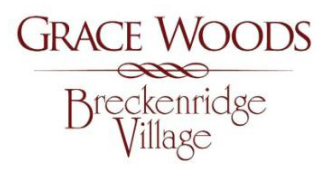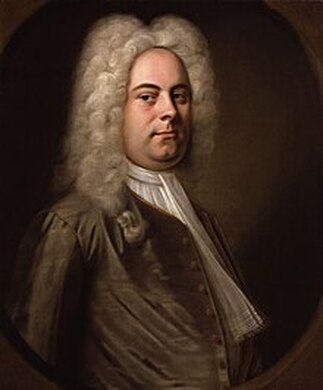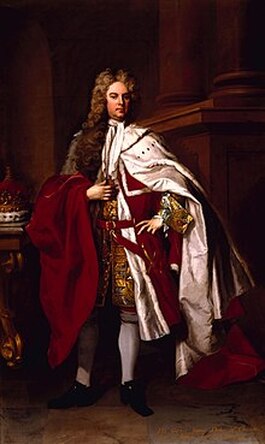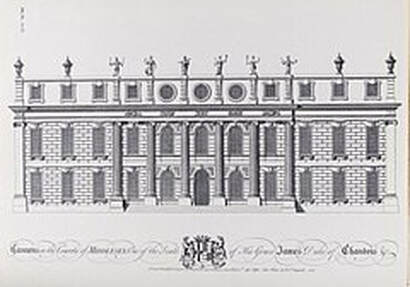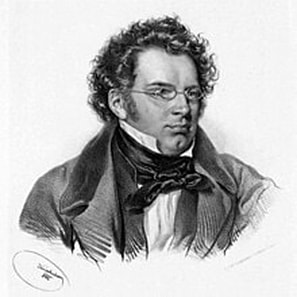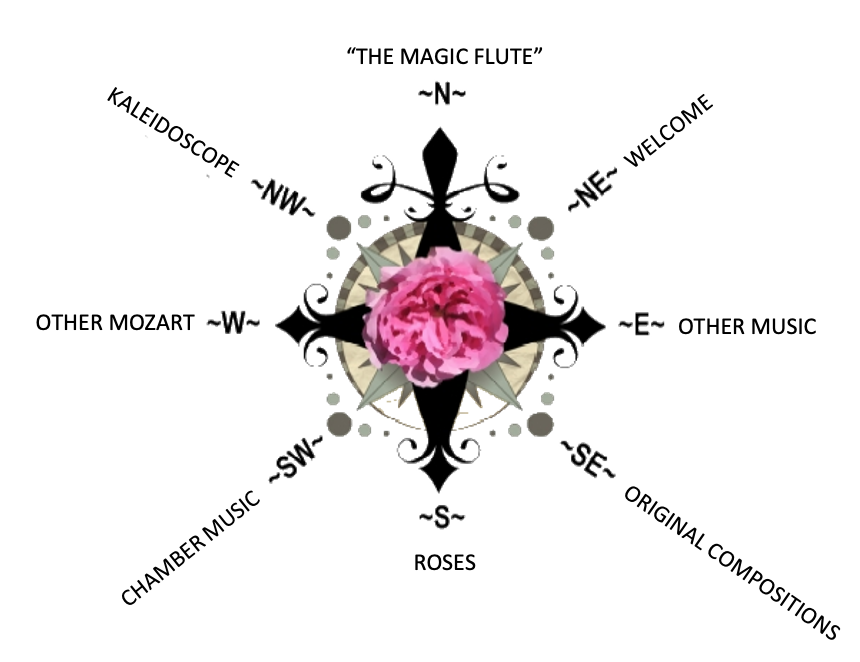- Home
- N - The Magic Flute
- NE - Welcome!
-
E - Other Music
- E - Music Genres >
- E - Composers >
-
E - Extended Discussions
>
- Allegri: Miserere
- Bach: Cantata 4
- Bach: Cantata 8
- Bach: Chaconne in D minor
- Bach: Concerto for Violin and Oboe
- Bach: Motet 6
- Bach: Passion According to St. John
- Bach: Prelude and Fugue in B-minor
- Bartok: String Quartets
- Brahms: A German Requiem
- David: The Desert
- Durufle: Requiem
- Faure: Cantique de Jean Racine
- Faure: Requiem
- Handel: Christmas Portion of Messiah
- Haydn: Farewell Symphony
- Liszt: Évocation à la Chapelle Sistine"
- Poulenc: Gloria
- Poulenc: Quatre Motets
- Villa-Lobos: Bachianas Brazilieras
- Weill
-
E - Grace Woods
>
- Grace Woods: 4-29-24
- Grace Woods: 2-19-24
- Grace Woods: 1-29-24
- Grace Woods: 1-8-24
- Grace Woods: 12-3-23
- Grace Woods: 11-20-23
- Grace Woods: 10-30-23
- Grace Woods: 10-9-23
- Grace Woods: 9-11-23
- Grace Woods: 8-28-23
- Grace Woods: 7-31-23
- Grace Woods: 6-5-23
- Grace Woods: 5-8-23
- Grace Woods: 4-17-23
- Grace Woods: 3-27-23
- Grace Woods: 1-16-23
- Grace Woods: 12-12-22
- Grace Woods: 11-21-2022
- Grace Woods: 10-31-2022
- Grace Woods: 10-2022
- Grace Woods: 8-29-22
- Grace Woods: 8-8-22
- Grace Woods: 9-6 & 9-9-21
- Grace Woods: 5-2022
- Grace Woods: 12-21
- Grace Woods: 6-2021
- Grace Woods: 5-2021
- E - Trinity Cathedral >
- SE - Original Compositions
- S - Roses
-
SW - Chamber Music
- 12/93 The Shostakovich Trio
- 10/93 London Baroque
- 3/93 Australian Chamber Orchestra
- 2/93 Arcadian Academy
- 1/93 Ilya Itin
- 10/92 The Cleveland Octet
- 4/92 Shura Cherkassky
- 3/92 The Castle Trio
- 2/92 Paris Winds
- 11/91 Trio Fontenay
- 2/91 Baird & DeSilva
- 4/90 The American Chamber Players
- 2/90 I Solisti Italiana
- 1/90 The Berlin Octet
- 3/89 Schotten-Collier Duo
- 1/89 The Colorado Quartet
- 10/88 Talich String Quartet
- 9/88 Oberlin Baroque Ensemble
- 5/88 The Images Trio
- 4/88 Gustav Leonhardt
- 2/88 Benedetto Lupo
- 9/87 The Mozartean Players
- 11/86 Philomel
- 4/86 The Berlin Piano Trio
- 2/86 Ivan Moravec
- 4/85 Zuzana Ruzickova
-
W - Other Mozart
- Mozart: 1777-1785
- Mozart: 235th Commemoration
- Mozart: Ave Verum Corpus
- Mozart: Church Sonatas
- Mozart: Clarinet Concerto
- Mozart: Don Giovanni
- Mozart: Exsultate, jubilate
- Mozart: Magnificat from Vesperae de Dominica
- Mozart: Mass in C, K.317 "Coronation"
- Mozart: Masonic Funeral Music,
- Mozart: Requiem
- Mozart: Requiem and Freemasonry
- Mozart: Sampling of Solo and Chamber Works from Youth to Full Maturity
- Mozart: Sinfonia Concertante in E-flat
- Mozart: String Quartet No. 19 in C major
- Mozart: Two Works of Mozart: Mass in C and Sinfonia Concertante
- NW - Kaleidoscope
- Contact
THANKSGIVING
by Judith Eckelmeyer
(GRACE WOODS MUSIC SESSION NOVEMBER 20, 2023)
Okay, true confessions: You haven’t received information about the contents of this music session because I started out in one direction and realized I really needed to go in another! Originally I had planned to present a work called “Thanksgiving and Forefathers Day”, from Four New England Holidays, by that most iconoclastic American composer Charles Ives.
A Symphony: New England Holidays by Charles Ives
San Francisco Symphony Orchestra conducted by Michael Tilson Thomas
San Francisco Symphony Orchestra conducted by Michael Tilson Thomas
While it’s an interesting work, it seemed to be more irritating on the whole than thanks-generating. We’ll try it some other time, perhaps. So, after days (!) of thinking and searching and pondering I found a couple of works that were more in keeping with the spirit of gratefulness: Handel’s Chandos Anthem No. 1, “O be joyful in the Lord”, and Schubert’s Symphony No. 5, B-flat major, D. 485. By the time that decision was made it was Saturday evening…. I hope you’ll all be thankful for the result of the delay and enjoy the music.
James Brydges, Duke of Chandos, took advantage of George Frideric Handel’s loss of compositional opportunity when the Italian opera firm in London collapsed in 1717.
By then Handel was a celebrated composer of operas in the Italian style and with Italian texts. Brydges brought Handel to his estate, Cannons, where Handel got to work creating 11 “Anthems” named for the Duke of Chandos, a Te Deum, and two dramatic works, Acis and Galatea andEsther.
The text of each of the anthems is one or more of the psalms, taken largely from the Anglican Book of Common Prayer. The first anthem, like several others, was scored for a trio of vocal soloists, without alto, and a small orchestra of strings (with no violas), oboe and bassoon; others, written later, had more resources: four or five-part chorus and orchestra. The intimate nature of the works is in keeping with their performance venue, the Duke’s chapel. Handel began the anthems with an instrumental sonata, then treated each verse of the psalms as a separate and unique unit. The text, fortunately for us, is in English. The movements are:
- Sonata (orchestra)
- Tenor: O be joyful in the Lord, all ye lands;
- Chorus: serve the Lord with gladness and come before his presence with a song.
- Soprano and Tenor: Be ye sure that the Lord he is God: it is he that has made us, and not we ourselves; we are his people, and the sheep of his pasture.
- Chorus: O go your way into his gates with thanksgiving, and into his courts with praise: be thankful unto him, ad speak good of his Name.
- Soprano, Tenor and Bass: For the Lord is gracious, his mercy is everlasting: and his truth endureth from generation to generation.
- Chorus: Glory be to the Father, glory be to the Son: and to the Holy Ghost;
- Chorus: As it was in the beginning, is now, and ever shall be: world without end. Amen.
Handel's Chandos Anthem No. 11, "Let God Arise"
Lynne Dawson, soprano | Patrizia Kwella, soprano | James Bowman, countertenor |
Ian Partridge, tenor | Michael George, bass
The Sixteen, on period instruments | directed by Harry Christophers
Lynne Dawson, soprano | Patrizia Kwella, soprano | James Bowman, countertenor |
Ian Partridge, tenor | Michael George, bass
The Sixteen, on period instruments | directed by Harry Christophers
Franz Schubert’s early compositional maturity was in part aided by his own home life, where his father had established an amateur orchestra, for which Franz composed a number of works, beginning with his third symphony in 1815. His fifth symphony, in 1816, is one of his most cheerful and yet concise. The themes are lovely and memorable, carried lightly by a modest orchestration of flute, oboe, horns and strings. The work is in the traditional four movements: Allegro; Andante con moto; Menuetto and Trio: Allegro molto; and Allegro vivace.
Franz Schubert: 5. Sinfonie B-Dur D 485
Sinfonieorchester – Frankfurt Radio Symphony ∙ Andrés Orozco-Estrada, Dirigent
Sinfonieorchester – Frankfurt Radio Symphony ∙ Andrés Orozco-Estrada, Dirigent
(Auftritt) 00:00
I. Allegro 00:15
II. Andante con moto 07:25
III. Menuetto. Allegro molto – Trio – Menuetto 17:34
IV. Allegro vivace 22:53
I. Allegro 00:15
II. Andante con moto 07:25
III. Menuetto. Allegro molto – Trio – Menuetto 17:34
IV. Allegro vivace 22:53
Judith Eckelmeyer © 2023
Choose Your Direction
The Magic Flute, II,28.
